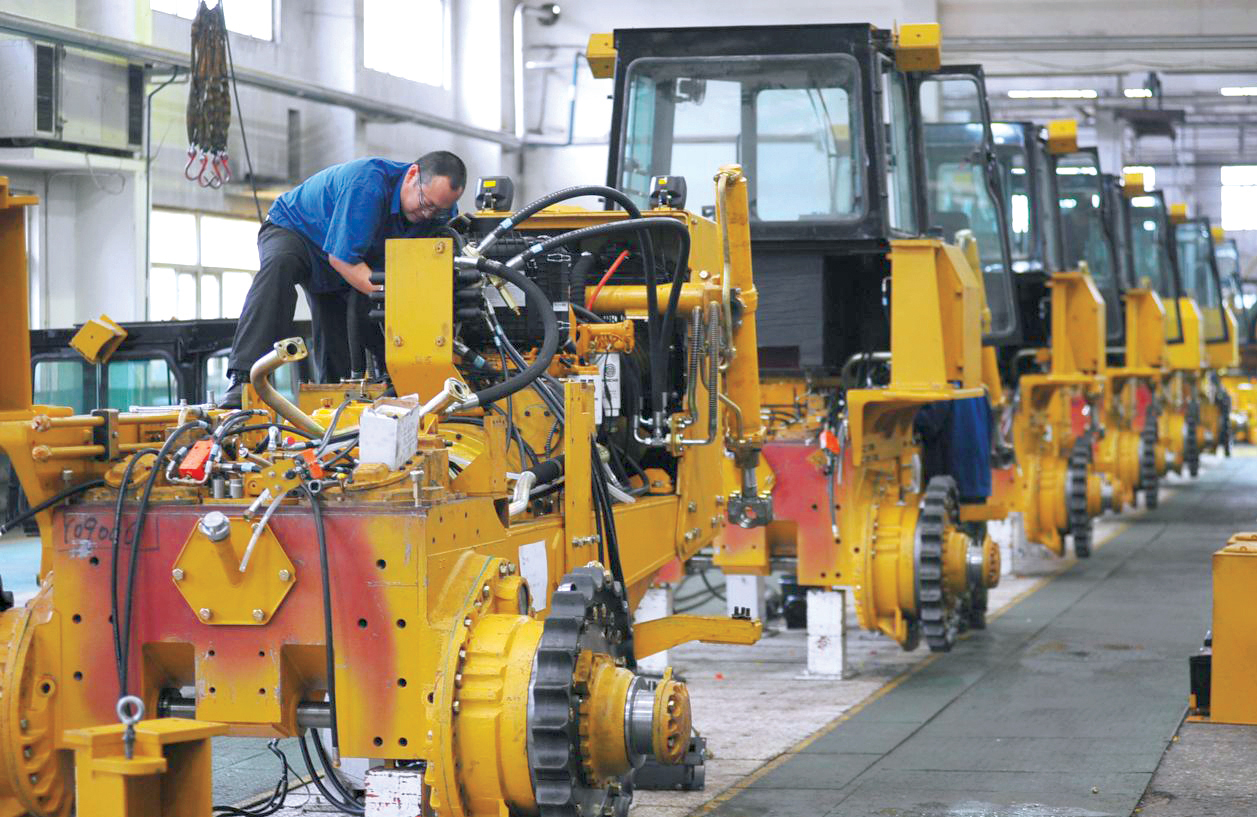

BEIJING: Growth in China’s factory sector stalled in September after 15 months of expansion, with export orders falling the fastest in over two years, a private survey showed on Sunday, suggesting US tariffs are starting to inflict a heavier toll on the Chinese economy. A separate, official survey confirmed a further weakening in Chinese manufacturing last month, with domestic and export demand also softening, though its headline reading still pointed to some growth. Taken together, the business activity gauges — the first major readings on China’s economy for September — confirm consensus views that the world’s second-largest economy is continuing to cool, which is likely to prompt Chinese policymakers to roll out more growth support measures in coming months.
The Caixin/Markit Manufacturing Purchasing Managers’ Index (PMI) for September fell more than expected to 50.0 from 50.6 in August. Economists polled by Reuters had forecast a reading of 50.5 on average. The neutral 50-mark divides expansion from contraction on a monthly basis. September was the first time China’s factories had not seen business improve since May 2017, when activity contracted. New export orders — an indicator of future activity — shrank at the fastest pace since February 2016, with companies attributing the shrinking orders to trade frictions and subsequent tariffs.
“Expansion across the manufacturing sector weakened in September, as exports increasingly dragged down performance and continued softening demand began to have an impact on companies’ production,” said Zhengsheng Zhong, director of macroeconomic analysis at CEBM Group.
“Downward pressure on China’s economy was significant,” said Zhong. The Trump administration has pointed to growing signs of economic weakness in China and its slumping stock markets as proof that the United States is winning the trade war, but Beijing has remained defiant, vowing to stimulate domestic demand to cushion the blow from any trade shocks.
Washington slapped tariffs on $200 billion worth of Chinese goods on September 24 and is threatening to impose duties on virtually all of the goods China exports to the United States.
Plans for fresh trade talks collapsed in recent weeks, and both sides appear to be digging in for a long fight, casting a pall over the outlook for global economic growth.
The official Purchasing Managers’ Index (PMI), released by the National Bureau of Statistics on Sunday, fell to a 7-month low of 50.8 in September from 51.3 in August, but remained above the 50-point mark separating growth from contraction for the 26th straight month.
Analysts surveyed by media had forecast the reading would ease to 51.2.
New export orders, an indicator of future activity, contracted for a fourth straight month, with the sub-index falling to 48.0 from 49.4 in August.
A sister survey of the official one showed stronger reading in September for services, which rose to 54.9 from 54.2 the previous month.
That offers some cushioning for the slowing economy as the services sector accounts for more than half of China’s economy, with rising wages giving consumers more spending power.
While China’s official export data has proved surprisingly resilient so far, many analysts believe companies have been rushing out shipments to the United States to beat successive rounds of tariffs, raising the risk of a sharp drop off once duties are actually imposed. The deepening slump in export orders may be bearing that theory out.
Export-reliant Chinese cities and provinces are already showing the strain. Guangdong, China’s biggest province by gross domestic product, reported a drop in exports in the first eight months from a year earlier.
Demand in China had already been slowing before the US trade row flared, as a multi-year crackdown on riskier lending and debt started to push up companies’ borrowing costs. Fixed-asset investment growth has sunk to a record low.
Policymakers have shifted focus in recent months to growth boosting measures to cushion the economy and weather the trade storm. They have sought to bring financing costs down, boost lending to smaller businesses, cut taxes and fast-track more infrastructure projects.
But analysts note it will take some time for such measures to put a floor under the slowing economy, with some predicting things will get worse before they get better. — Reuters
Oman Observer is now on the WhatsApp channel. Click here



